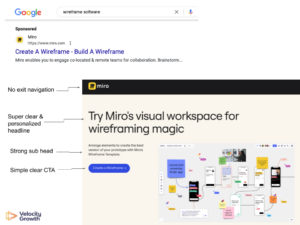How To Get Started Building Your First Marketing Strategy
Developing an effective marketing strategy for your business is the most important first step in bringing in new customers, increasing sales, and increasing profits. The truth is that most businesses don’t have a marketing strategy because they don’t know what a marketing strategy is. In this article, you will discover the best steps to build your first marketing strategy while also introducing you to the key questions you should focus on.
First things first! What is a marketing strategy?
Creating a marketing strategy doesn’t have to be difficult or overwhelming. Having a structured methodology through creating a well-defined plan of action that includes the activities you will take to achieve your goals and the expected results you want to see, will have your business is on the path to success. Overall the purpose of your marketing strategy is to identify your target customer, determine what products and services your target market need, how you‘re going to reach your market, and help you to pinpoint the marketing tactics that will work best.
Your strategy is based on the goals of your business. If your goal is to increase profit margins next year by 10%, then your marketing strategy should focus on tactics that will accomplish this goal. If your goal is to gain new customers, then your marketing strategy should focus on tactics that will accomplish this goal.
Developing Your Marketing Strategy
Here’s a breakdown of what a marketing strategy should identify and include:
1. Define your goal and objective
The first step to creating a marketing strategy is to identify your goals and objectives. Once you have established your goals, you can start developing an actionable plan to help you achieve those goals.
2. Set measurable targets
Having clear, measurable targets will help you gauge success and ensure that you’re headed in the right direction. For example, if you want to increase sales by 20%, then you can track how many new customers you’re getting every month to make sure that you’re on track to meet your goal. If you want to increase awareness about your brand, then you can keep track of how many people are talking about your business on social media and other online channels.
3. Determine the best approach
To help you determine the best approach to achieving your goals, it’s important to do your research and be aware of what your competitors are doing. Are they advertising on Facebook? Is there a trend that you can capitalize on? What’s working for them, and what’s not? This will also give you a chance to learn more about your target audience and what types of messages resonate with them.
4. Develop a plan for reaching your goals
Once you have established your goals and determined the best approach to reach those goals, you need to develop a plan for executing those goals. This will require you to figure out what resources and time you’ll need to achieve your goals. You also need to take into account any additional factors that could affect your progress, such as economic conditions or other unforeseen circumstances.
5. Execute the plan
Now that you have a plan in place, it’s time to execute it. The most thorough plan is only as valuable as its execution. As you go through the process, be sure to keep track of your progress and adjust accordingly if you find that your initial plan isn’t working well.
6. Measure your results
At the end of the period you’ve set for reaching your goals, you need to determine whether you have been successful. If so, great! If not, you need to figure out why and whether you should try again with a new approach.
Understanding Your Audience
You can’t design a good marketing plan without understanding who you’re designing it for. To do this, you must first define your target audience. This definition is the key to everything in your plan—it will determine what you will use to reach them, where you will reach them, and how you will reach them. It’s not enough to just say, “I’m targeting business owners” or “I’m targeting women between the ages of 25 and 55.” You have to define who in that pool of people you are going after. An example might look something like this:
____________ is a business owner who:
• Has her own small business and is looking to take it to the next level, or,
• Wants to start her first business and is looking for guidance and support, or,
• Is an established business owner and wants to get more clients, and so on.
How do you know if you’ve defined your audience correctly? You should be able to use the description to easily create a list of your target audience’s characteristics, such as where they live, what they do for a living, what websites they visit, what magazines they read, and so on. You should also be able to create a list of where you can find your target audience—for example, at conferences and trade shows, in local newspapers, on Facebook, LinkedIn, Twitter, and so on.
Your next step is to determine what your audience wants or needs from you. Ask yourself:
• What problems does my target audience have?
• What questions do they have?
• What are the challenges my target audience faces?
• What are their problems?
• What needs do they have?
You can find out what your prospects want and need by asking them directly by doing market research through a questionnaire for example.
Minimising Chance, Maximising Opportunity
Marketing is the lifeblood of your business. As a business owner, you are expected to provide the direction for your marketing strategies and goals. To bring the most value and get the most out of your marketing efforts, you need to have a strategy.
If you don’t have a marketing strategy, you will most likely be throwing random marketing tactics at the wall to see what sticks. This approach is not going to be very effective and will lead to a lot of wasted time and money. Your strategy should be created before you spend any money on marketing.
Having a well-thought-through and clearly defined marketing strategy will allow you to focus on what you really want to accomplish, not just what you think you can accomplish. If you want to maximise the reach and engagement of your business, putting the time and effort into developing your strategy is a must.

Jen is an award winning paid acquisition specialist with an honours masters degree in Digital Marketing Strategies. She is the founder of Co-founder & CMO at Velocity Growth. Jen has extensive experience working with start-ups, marketing teams and founders on their paid acquisition both in an agency and in-house capacity. She has helped companies across Ireland, UK and USA leverage phenomenal growth both nationally and internationally through paid acquisition channels.






